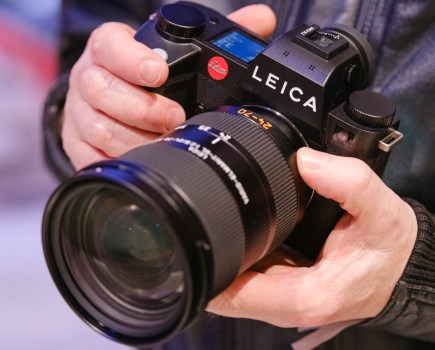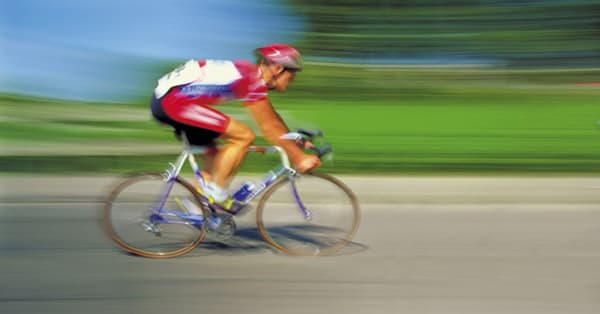
There are those who say that the only true exposure tool in photography is the shutter speed. Exposure could be defined as the length of time that film or a digital sensor is exposed to light. The aperture determines how much light is let in during that exposure. Of course, broader photographic theory explains that exposure is a combination of aperture and shutter speed.
So what exactly is the shutter, and what does the term shutter speed mean?
The shutter is a gate inside the camera body between the sensor and mirror. It can usually be seen when the lens is detached from the body and the mirror raised.
The shutter consists of a front and rear metal curtain. It’s operated by the shutter release button, often lazily referred to as the shutter button or even just the shutter – which can be confusing. When the button is pressed the front curtain begins to move to expose the image, closely followed by the second, or rear curtain in the same direction. This creates a gap, that travels at a constant speed across the sensor to expose the entire frame. Shutter speed refers to the amount of time the shutter is open, between the first and second curtain, thus exposing the image.
Typically, the length of time the shutter is fully open amounts to mere fractions of a second, and hence they are expressed as such, for example 1/60 sec, 1/500sec and so on. Occasionally you may need to make longer exposures of several seconds, or even minutes. The smaller the fraction, the shorter the exposure and vice versa. So for a one second exposure, the first curtain opens fully and a second later the second curtain follows it to close the shutter.
Just like the aperture, each ‘stop’ between shutter speeds – selected via an on-camera dial – doubles or halves the exposure, so 1/125sec is half the time of 1/60sec, reducing the exposure by 1EV (Exposure Value) or one stop; while 1/30sec is double the time of 1/60sec so increases the exposure by 1EV or one stop. Modern cameras also have half or third stop increments, ensuring more accurate exposure.
The length of time the shutter remains open has an effect on the image. Short (or fast) shutter speeds stop action mid-track, while long (or slow) shutter speeds will blur any movement.
How to Use Shutter Speed – Typical DSLR Shutter Controls
1: Shutter Release Button
Aside from operating the shutter mechanism, this button also activates the cameras focus, metering and white balance.
2: Mode Dial
The best mode to choose is Shutter Priority AE, marked as S or TV (for Time Value). Alternatively Manual (M) allows control of both shutter speed and aperture.
3: Command Dial
Situated at the back or near the shutter release button, the command dial can be used to choose the speed we wish to use.
4: LCD Screen
Amongst the information displayed on the screen is the shutter speed. Usually only the denominator figure is shown, ie 125=1/125sec.
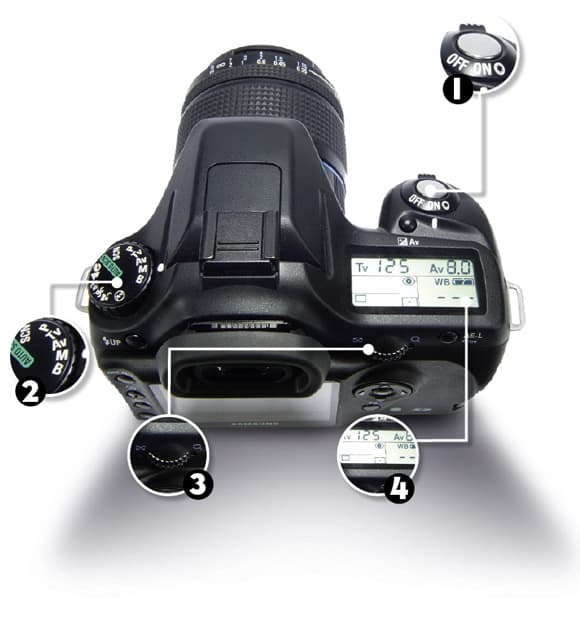
How to Use Shutter Speed – Shutter Speed and Lenses
The focal length of the lens you’re using is important in determining the shutter speed you use, in order to avoid camera shake. Camera shake is a motion blur effect caused by a combination of camera movement and slow shutter speed. Whenever we hand-hold a camera simply pressing the shutter can cause camera shake. It can also be affected by the length and weight of a lens.
As a rule of thumb, the slowest shutter speed you can use will have a denominator roughly the same as that of the lens focal length. In digital terms, the 35mm film equivalent focal length should be used. So a 50mm lens, with a 35mm equivalent focal length of 75mm (approximately 1.5x magnification), requires a shutter speed of 1/75sec or faster. For most users this will equate to around 1/60 to 1/125sec, depending on how many coffees you’ve had. That may sound like a joke, but in fact caffeine and other stimulants can have an effect on camera shake. Camera shake can be avoided by using a support such as a tripod, or even resting your body against a wall, or raising the cameras ISO or opening the aperture. Alternatively there are also lenses with Image Stabilisation.
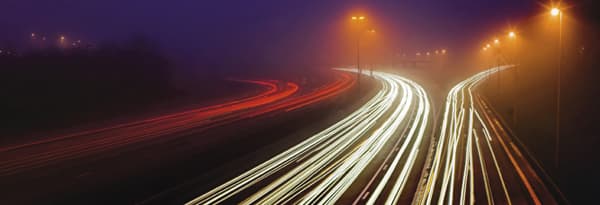
Slow Shutter Speeds
Long, or slow, shutter speeds can be used to tremendous effect, but you will need to hold the camera steady. A couple of ways of doing this is by using a tripod (preferable) or merely by placing the camera on a table and changing the angle by raising the lens angle of viewpoint with books, ashtrays or whatever is to hand. A tripod or monopod is your best bet, though.
Most people have seen pictures of waterfalls with blurred water, or Piccadilly Circus with car trails. These pictures are easy to take using a combination of small apertures and long shutter speeds of one second or more, with DSLRs usually offering a range up to 30 seconds.
The best mode to shoot these types of pictures is Shutter Priority AE (S on most cameras, or Tv on Canon cameras), which allows you to set the shutter speed, while the camera decides the appropriate aperture.
If there are a lot of highlights in the shot (for example, the neon signs of Piccadilly), then make sure to meter carefully. If in doubt, take several shots at different apertures, which is otherwise known as bracketing.
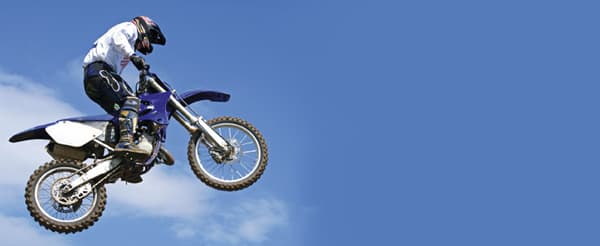
Fast Shutter Speeds
The reciprocal effect of aperture and shutter means that as you open the aperture, the shutter time gets shorter, or the ‘speed’ becomes ‘faster’. For average, everyday shooting with standard zooms a speed over 1/60 to 1/125sec will prevent camera shake, and for everyday situations, the upward speeds from there generally have little effect on your pictures. However, as the shutter speed goes past 1/500sec, you can really start to take advantage of the faster shutter speeds’ ability to ‘freeze’ action. Entry level to mid level DSLRs offer a maximum shutter speed of about 1/4000sec, while the Pro cameras such as the Nikon D2X offer speeds as high as 1/8000sec. For high-speed photography this is really useful, as well as sports photography where you really need to catch the detail of Lewis Hamilton’s McLaren. Of course, this also requires either wide apertures, bright lighting conditions or an adjustment to the cameras ISO speed – or a combination of all three to make using these speeds possible.
 The ‘B’ Setting
The ‘B’ Setting
There may be times when 30 seconds isn’t long enough, and you need to keep the shutter open for several minutes. Especially if you’re a fan of night-time photography. Many DSLRs have a setting called Bulb, or B, which will keep the shutter open for as long as you keep your finger pressed on the shutter release button. The term originally came, it’s believed, from the old Bulb type cable releases- which squeezed a shot of air down a tube to the shutter release button to press it.
With modern cameras, a cable release of some description is still recommended as even on a tripod you could move the camera during the long exposure if you were to handle it directly.
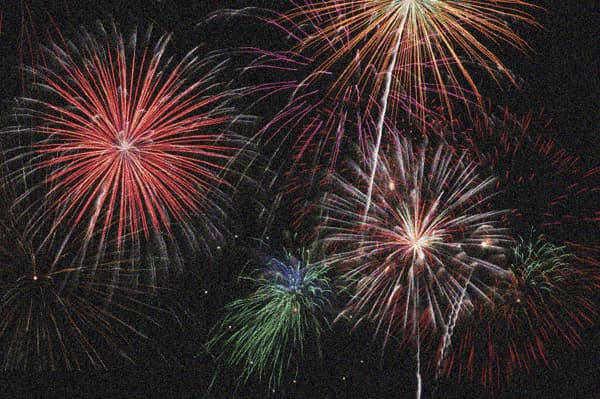 Image Noise
Image Noise
Long exposures on film are susceptible to a problem called reciprocity failure, where the 1-stop aperture/shutter reciprocal relationship ceases to work after a certain slow shutter speed. This would lead to colour casts and under-exposure. Digital cameras don’t have this problem, but longer exposures can increase the signal to noise ratio in one or more of the colour channels, causing unpleasant artefacts. Most DSLRs have a built in long exposure Noise Reduction filter hidden somewhere in the menu, which usually adds a small amount of blur to the offending channel. The amount is usually set by the camera manufacturer, though some people prefer to use PC based noise reduction software for more controllable results. The reason for this is that the blur added by the camera’s system can sometimes affect the overall image sharpness.
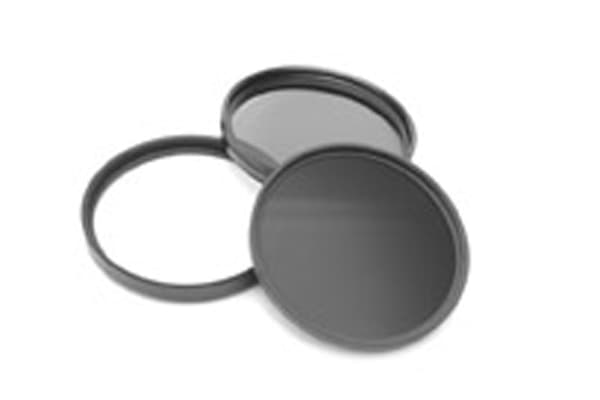 ND Filters
ND Filters
There may be times when the light is so bright, that even with the smallest aperture, you can’t extend the shutter to the time you need to get the effect you require. In this case a Neutral Density filter can be used. Essentially, an ND filter is like sunglasses for your lens- a piece of darkened glass or gelatin is placed over the lens and reduces the amount of light entering the lens. ND filters are available over a wide range of densities, up to 8 stops. The filters can usually be doubled to increase the effect.
Neutral Density filters will affect the brightness of the viewfinder, so you may have to compose and focus before you place the filter over your lens, especially with higher density filters
How to Use Shutter Speed – Shutter Speed and Motion
 This sequence shows how the shutter speed that you choose affects the way that moving subjects are recorded by the camera. Remember though that the precise effect will depend on various factors, including the speed of the subject.
This sequence shows how the shutter speed that you choose affects the way that moving subjects are recorded by the camera. Remember though that the precise effect will depend on various factors, including the speed of the subject.
For everyday subjects faster shutter speeds will have little effect on the overall result. However, a shutter speed of 1/500sec and above will freeze fast moving objects. Most people do not need the fastest speeds other than to allow wide apertures, although higher speeds are vital to some forms of specialised photography such as balistics testing.
Panning Technique
One of the most common shutter techniques is that of panning. If you are shooting a racing car, for example, and press the shutter, using a fast shutter speed of 1/1000sec at the moment the car passes the camera, you will get a frozen, motionless-looking car in front of pin sharp background. Alternatively with a slower shutter speed of 1/60sec, you will get a blurred car as it travels too fast to record on the sensor.
Panning involves following the car with the camera and pressing the shutter release button at the same time, so the car will be sharp but the movement of the camera will blur the background. This takes some practice, especially with fast-moving subjects such as motor racing cars, but adds drama to the image to create a sense of movement and speed.
How to Use Shutter Speed – Flash and Shutter Speed
Camera specifications will often quote an X- sync speed. This is the fastest shutter speed possible with which a flashgun will work. The sync speed is typically set at around 1/60 to 1/250sec, although higher speeds can be used be used with dedicated hi-speed flash units.
The X-sync shutter speed is determined as the point when the shutter is fully open and the camera sends a charge to the flash to fire. The burst from a flashgun is typically much shorter than the time the shutter is open, but there is an optimal point when the shutter is fully open. If the shutter speed is too fast for the flash, the image will not be fully exposed to the flash burst and areas of the image will receive no light, so black lines appear in the final image. Slower shutter speeds can be used to exploit the ambient or background light.





